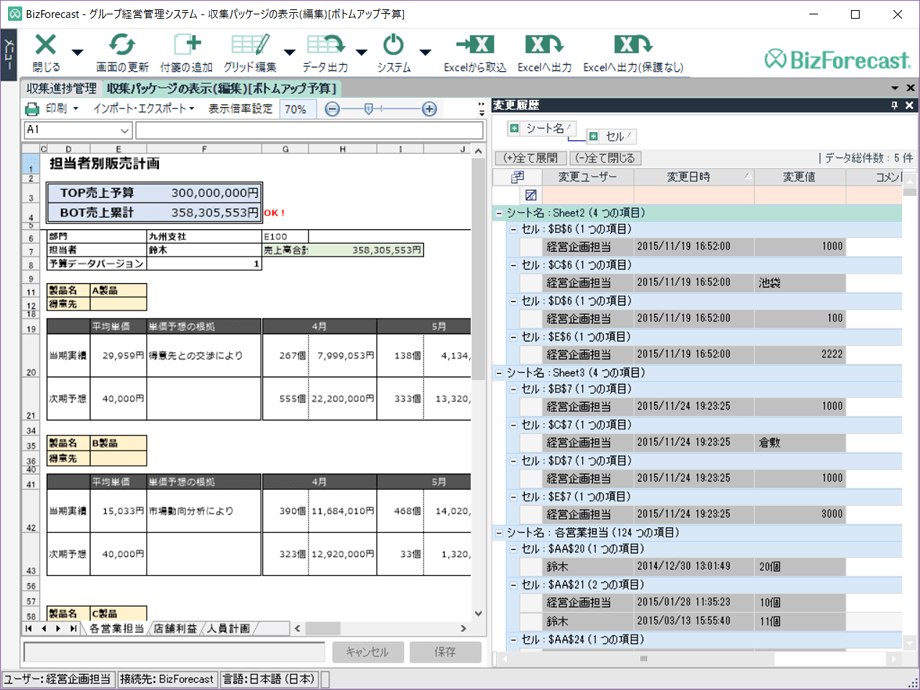Core: Core Module
BizForecast Core Concept and Features
Business management operations consist of three major processes as shown in the figure below: 1) information collection; 2) compilation and processing; and 3) reporting. Often, these operations are handled by so-called "back office" departments such as Accounting department, Planning department, Personnel departments, and General Affairs department. These processes are often constructed and operated with Microsoft Excel or other spreadsheets. Unfortunately, it's not uncommon to find these processes completely out of the scope of an ERP package or other similar systems that handle general operations.
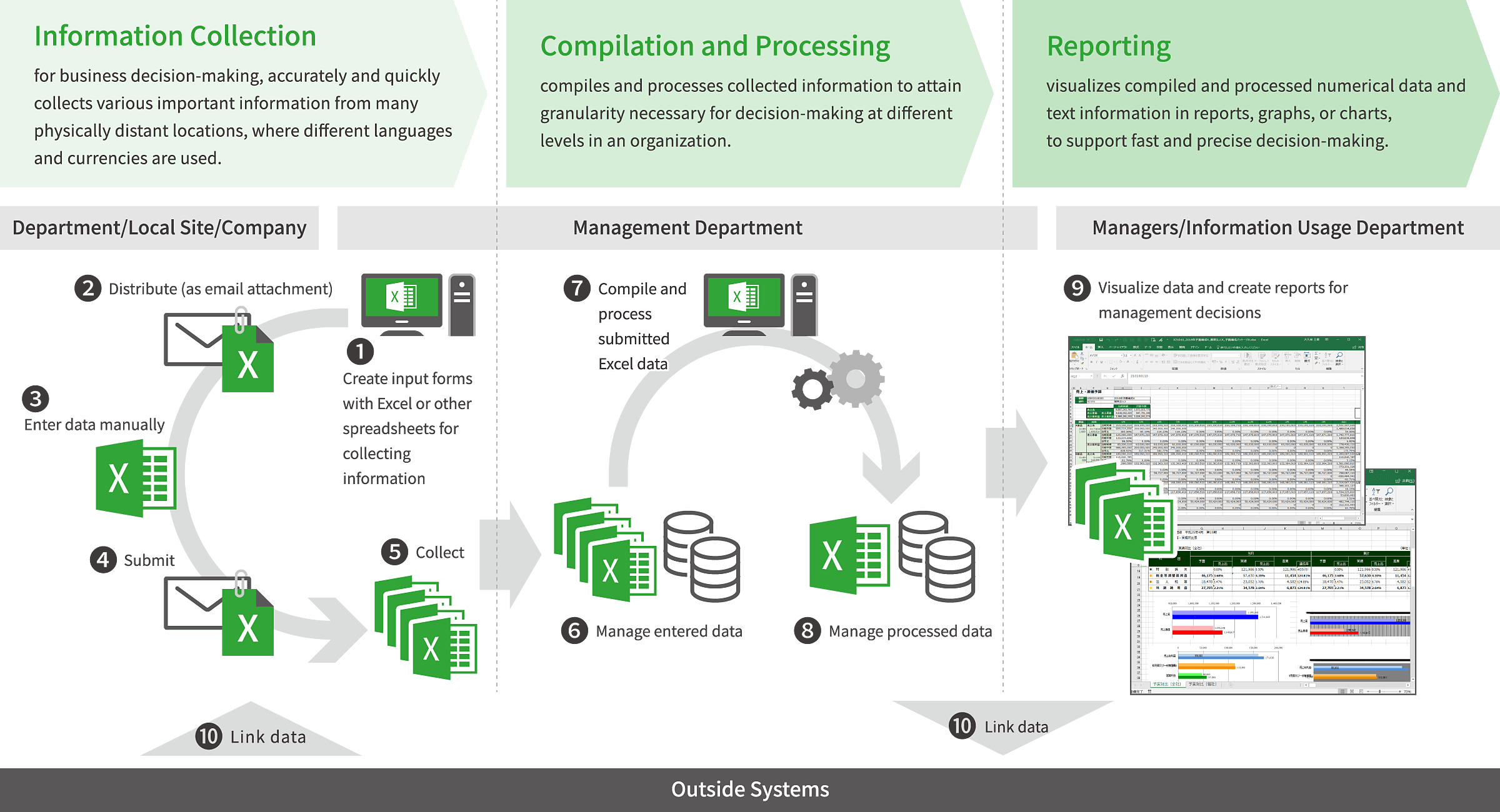
Why do these operations heavily use Microsoft Excel or other spreadsheets? Why are they commonly set outside of the scope of a core business system? That's because the task requirements for these operations are highly complex to standardize. For example, in order to keep up with fast-paced changes in business environment and management policies, it is often necessary to annually review which information to collect, what data processing methods to apply, and which contents to include in reports. It's simply difficult to systemize these operations.
With BizForecast Series, while you'll enjoy the full benefits of Excel's flexibility to carry through your management operations, your system will be built with the same high quality levels of information sharing and security as a client-server type⁄web system. You'll be also able to perform annual maintenance on your own.
Core: Core Module plays a central role in BizForecast Series. In addition to all the functions of 1 through 10 above, it carries the fundamental data structures and general functions of an accounting system, such as journal data entry and accounting worksheets. Let it manage any data from multiple group companies or departments. Take advantage of its multi-language capabilities. Core can systemize your entire business management operations.
List of Functions
BizForecast Core: Core Module is equipped with all the fundamental functions that are required for the three processes of information collection, compilation and processing, and reporting.
Information Collection
- Designing of data collection packages
- Excel import⁄export
- Management of data collection progress
- Workflow
- Spreadsheet data entry
- Data integrity check
- Evidence management
- Cell edit trace functions
- Web browser version
Data Entry
Compilation
Processing
- Journal entry and search
- Accounting worksheet
- Currency translation
- Carry-forward process
- Data batch process
Reporting
- Report management and search
- Drilldown display
- Designing and outputting of user-defined reports
- Outputting of various template reports
Others
- Master maintenance
- Multi-language capabilities
- Multi-currency capabilities
- Multi-accounting standard capabilities
- Internal control and audit capabilities
- Linkage with outside systems
- Simple ETL⁄EAI
Function Overview
1.Information Collection Functions
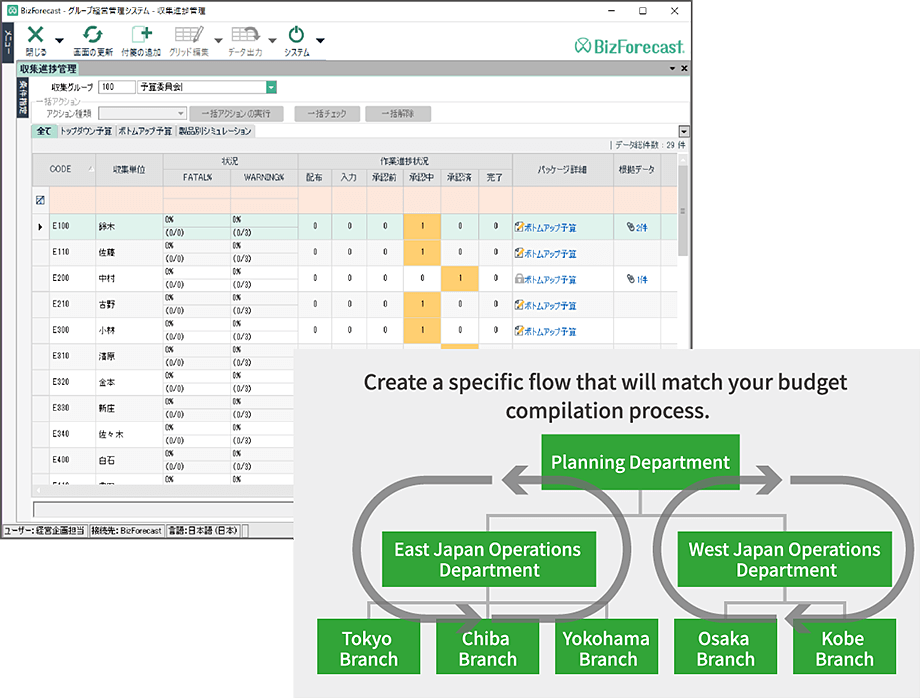
(1) Management of Data Collection Progress
BizForecast is equipped with a workflow management function, which lets you track real-time progress status of data collection.
No more struggles looking through Excel files in shared folders or email history to manage all the data collection progresses at individual departments, offices, or companies. You'll be able to accomplish it in one place in the progress management screen with the workflow function.
(2) Data-Collection Package Designing Function
Since data entry forms can be designed and configured in Excel, with a little getting used to, you can create your own packages.
You will be also able to update your forms or packages on your own in case of changes in management policies or external environments after the start of the operation.
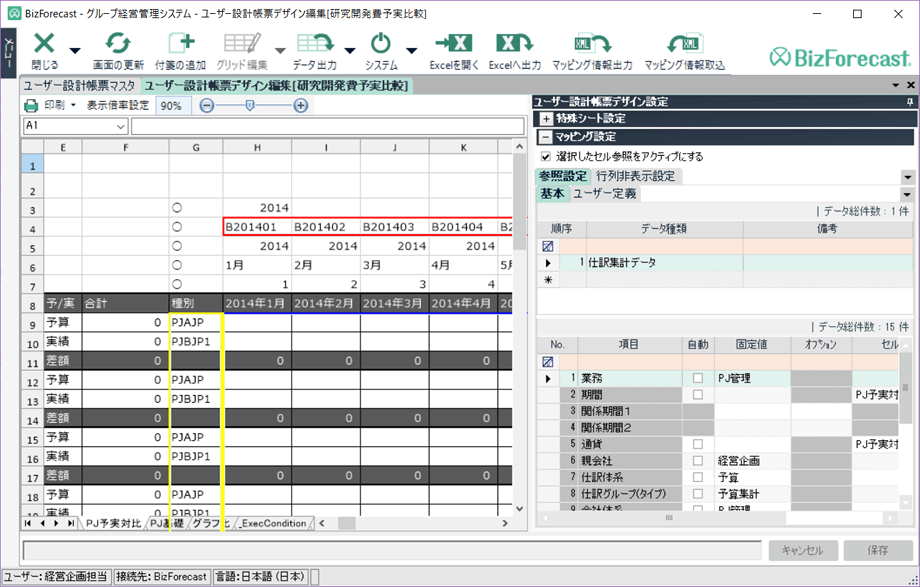
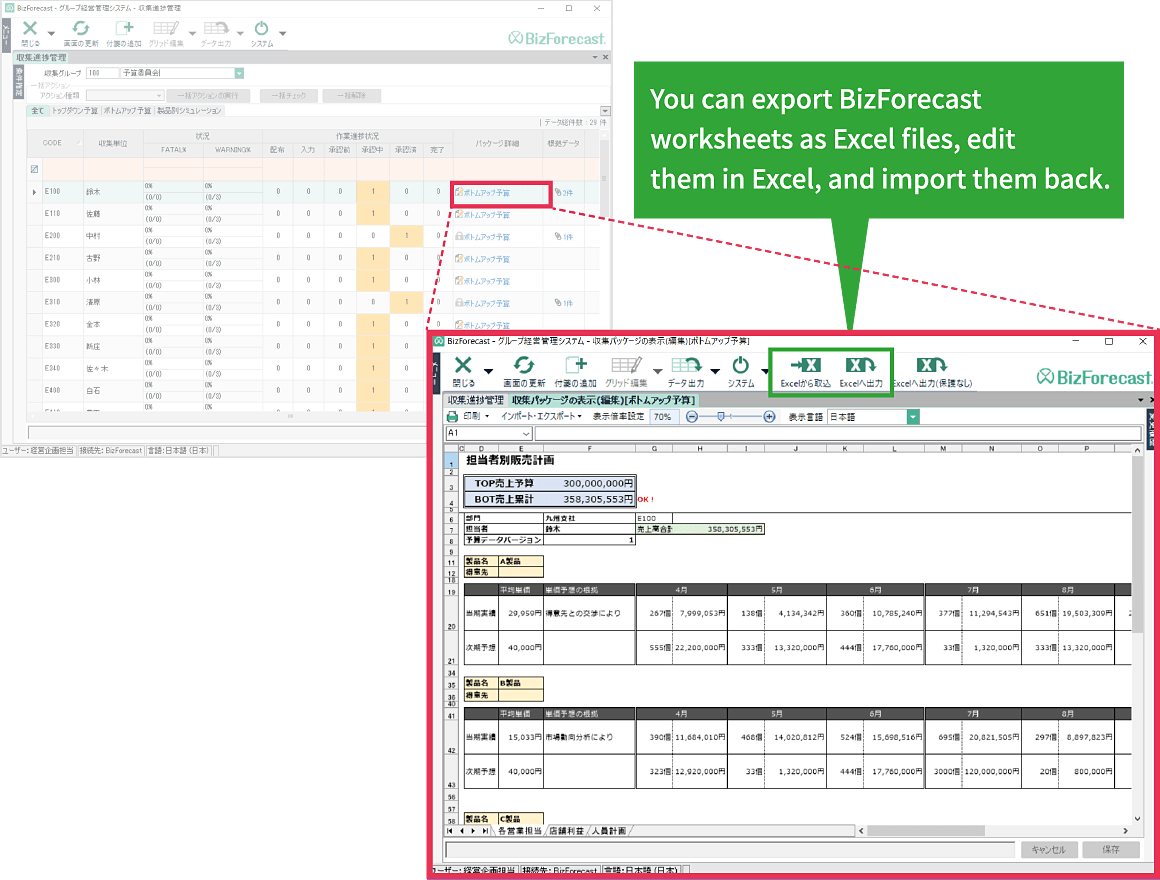
(3) Excel Import⁄Export Functions
On BizForecast's Excel-like spreadsheet, you can enter and check data online, with operations similar to Excel.
You can export BizForecast files as Excel files while keeping formats, calculation formulas, or input restrictions (sheet⁄cell protection) as they are. Once exported, you can edit the files in an offline environment, save them in your local drive, and import the edited files back into BizForecast.
2.Compilation and Processing Functions
(1) Journal Entry⁄Search Functions
Since BizForecast is equipped with the fundamental data structures and functions of a (consolidated) accounting system, you can register journal data in a transfer slip format.
Any data that have been registered through the information collection process will be saved internally as general-purpose journal data, enabling you to build a system that will match all of your management accounting needs.
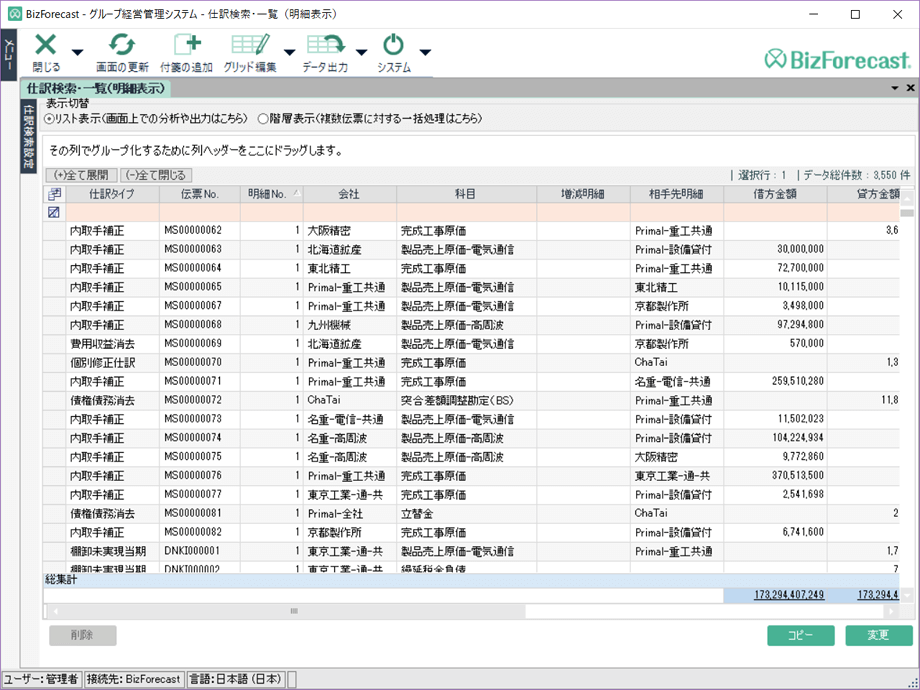
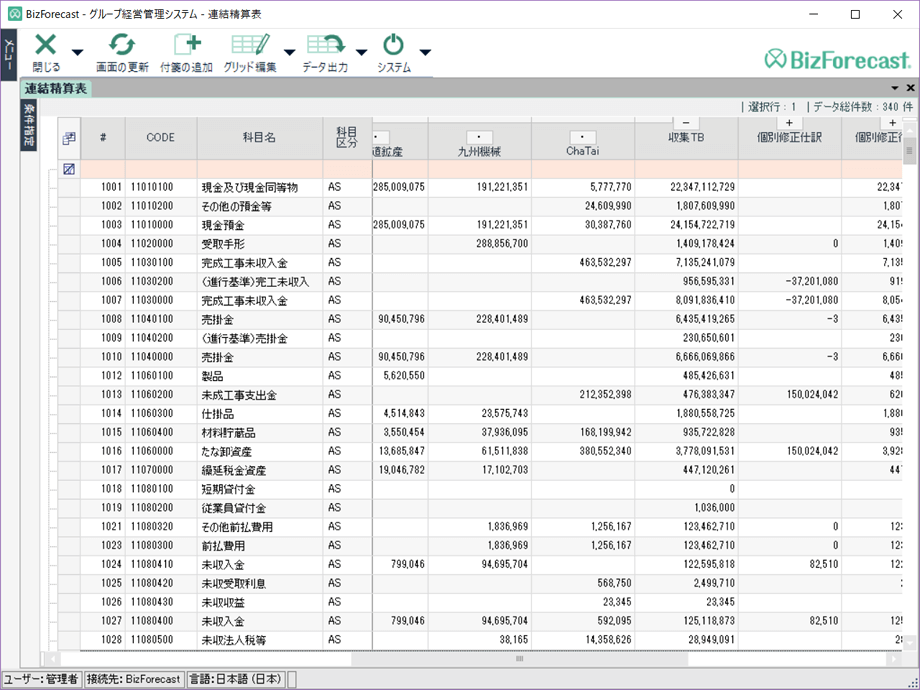
(2) Accounting Worksheet Function
Once numerical data are registered through the journal entry function, data linkage, or other functions, you can display the data in a so-called accounting worksheet format.
BizForecast worksheets are specifically designed to tabulate and display real-time journal detail data (without prior compilation or registration processes) when they are opened, so that you can always check real-time data that have been gathered from all locations.
One of the greatest features of BizForecast is the unmatched performance of this real-time settlement processing.
3.Reporting Functions
(1) Drilldown Display Function
You can check the details of a journal entry by drilling down from a worksheet.
Then, on the journal detail screen you can use convenient tools like the Excel-like filter function, or drag and drop a header to change the grouping units as you wish.
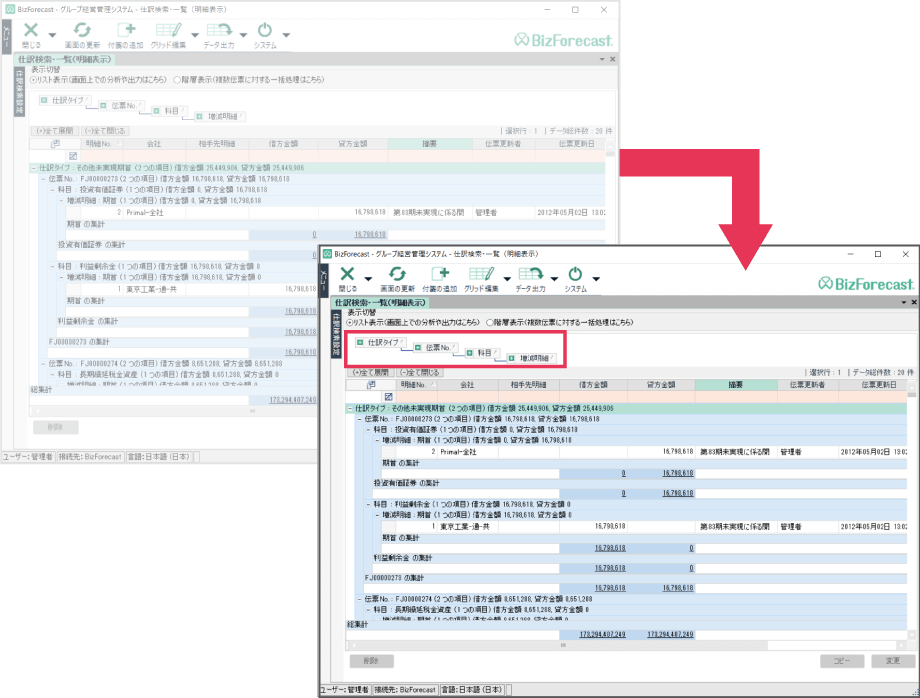
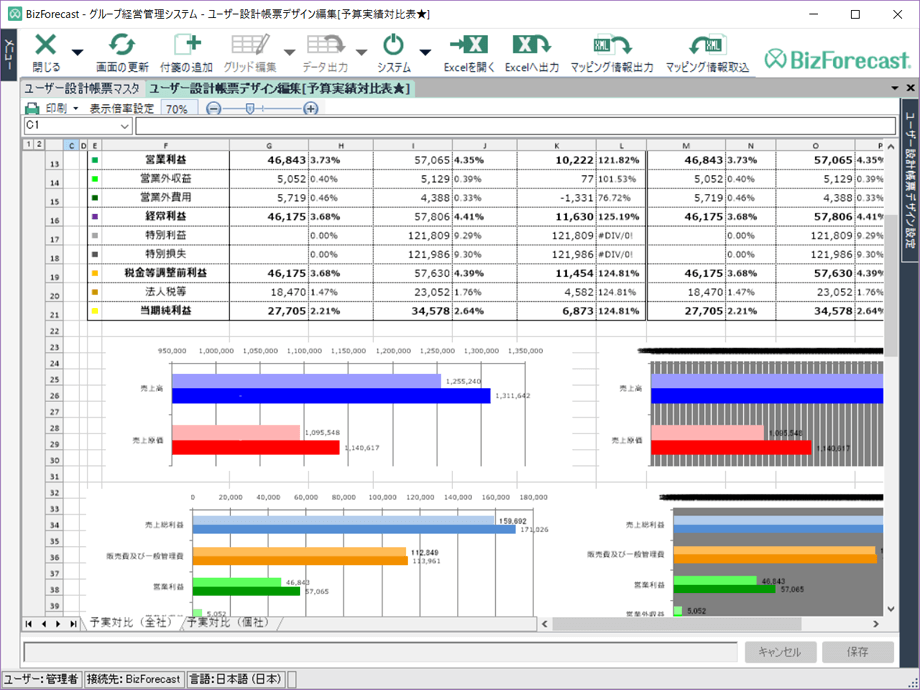
(2) User-Designed Report Function
You can design and create your own reports. It is done in the same way as for creating data collection packages, as we kept a high level of consistency in the operations.
Take advantage of this function to import your existing Excel reports into BizForecast to use them as user-designed reports or to create visually appealing reports with colorful graphs and charts.
Your user-designed reports can be output under specified conditions. If you save them on the server, they can be retrieved anytime from a list of reports.
4.Other Functions
(1) Multi-Language Capabilities
All the screens relating to BizForecast's main functions, including all the functions for information collection and data entry, can be displayed in Japanese, English, or Chinese (Simplified).
You may use other languages than Japanese, English, or Chinese for your user-designed collection packages.
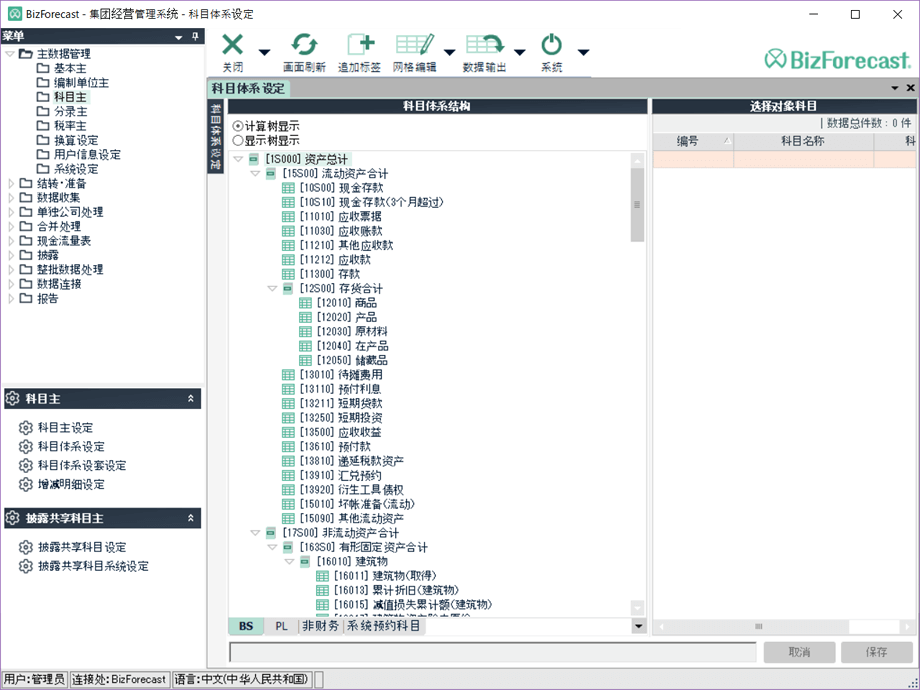
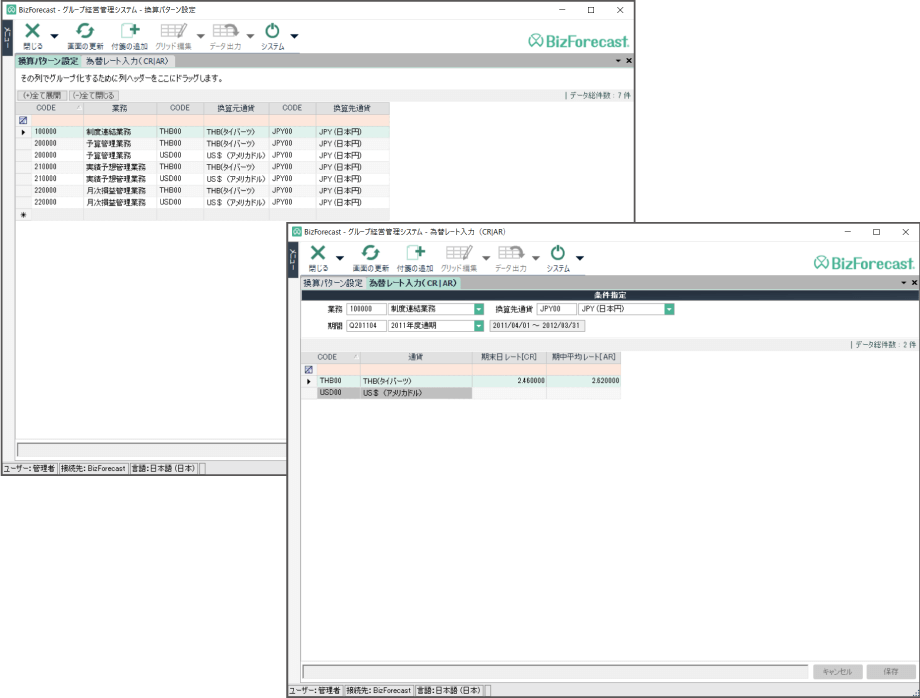
(2) Multi-Currency Capabilities
Monetary data in BizForecast will be managed as transaction data in one of the currency units that are registered in the currency master database.
By registering exchange rates between currencies beforehand, you can run a currency translation during the process of creating financial statements, as required by the Japanese Accounting Standards and the International Financial Reporting Standards.
(3) Internal Control and Audit Capabilities
During the BizForecast's information collection process, you can manage the change history for each cell on the Excel-like spreadsheet.
This function covers journal data and master databases as well, meaning that from data entry on spreadsheets to disclosure reports, you can trace back any changes that have been made.
